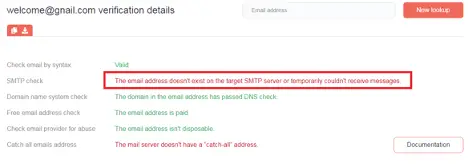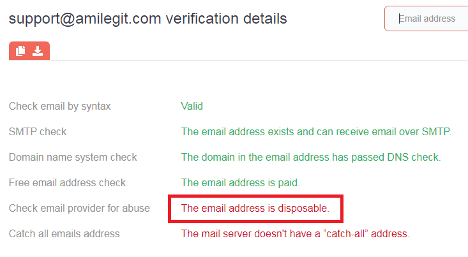You may have heard about email checker or email validation tools in the context of email marketing. It helps rid email distribution lists of invalid and nonexistent email addresses. But did you know that an email checker API can also boost your cybersecurity posture? In this post, we cited two common cybercrimes that can be prevented or at least lessened with the help of an email checker API.

Common Cybercrimes that an Email Checker API can mitigate
Email checker or email verification tools enable security teams to check an email address’s validity and existence. But more importantly, they can also check the quality of an email address. That allows security teams to block emails from low-quality addresses, which threat actors commonly use. Some of the telltale signs of a low-quality email address are:
- They were created using a disposable email address provider.
- The email address is random-looking or contains an unreadable series of characters.
- They typosquat a famous email service provider’s domain. An example would be gnail[.]com instead of gmail[.]com.
By checking the characteristics of each email address that arrives in your network, you can better tackle the following:
1] Phishing
Phishing is a familiar term in both homes and offices. It is the most common cause of more severe cybercrimes, such as ransomware infections. An innocent click on a malicious email could give threat actors access to your network, allowing them to plant data-stealing malware.
To prevent phishing, organizations educate their staff, clients, and end-users about the threat’s dangers and how to recognize phishing emails. But it only takes one user to fall victim to phishing to expose the whole network. Thankfully, organizations can rely on technologies like an API for email verification such as email verification to fight against phishing and, by extension, other cybercrimes that start with it.
Most phishing campaigns use typosquatting domains to make emails look more believable. These domains are not designed to receive emails, so they usually fail a Simple Mail Transfer Protocol (SMTP) connection check. The email address welcome@gnail[.]com, for instance, is a gmail[.]com lookalike that failed our email checker’s SMTP check.

Upon checking on VirusTotal, we found that gnail[.]com is associated with phishing campaigns. As such, blocking typosquatting email domains and those that fail SMTP checks done via an email checker API can help organizations prevent phishing.
2] Spamming
When you create an email address via regular service providers like Gmail, ProtonMail, or Outlook, you need to dedicate at most 10 minutes to fill out all the required information. However, when you go to disposable email providers such as GuerillaMail and 10MinuteMail, you can obtain an email address in a matter of seconds.
The ease and speed at which one can create a temporary or disposable email domain might be a significant reason why several malicious actors use disposable email addresses. If you use an email checker in your email filtering system, however, you immediately keep out disposable email addresses.
To illustrate, we ran the email address support@amilegit[.]com on Email Verification API, which detected that the address exists but disposable.

Blocking this email address would help organizations prevent spamming, especially since the email domain amilegit[.]com is tagged as a spammer on VirusTotal.
Phishing and spamming are two of the most commonly used attack starting points. In fact, a significant share of data breaches can be attributed to phishing and business email compromise (BEC) attacks. And with more people doing financial transactions online, more spam emails are malware-laden.
Using an email checker API to assess email addresses’ quality before they enter your network would help protect your whole organization. Cybersecurity is made more potent and robust.